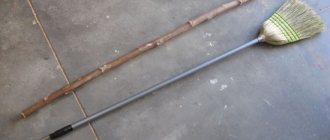In the era of thriving technology, endless cartoons and the same endless feeds on social networks, both children and parents began to forget about simple communication, looking into each other’s eyes, and not at the screen of a TV, tablet or smartphone. Think about how long ago you played with your child? Oddly enough, even ideas for the simplest and once popular games have long been lost in memory and undeservedly lost their relevance.
Games for children are not only a great way to spend family time, but also an opportunity to develop thinking, memory, logic, and reaction speed. We have collected the best children's games that will captivate the whole family and give a charge of vivacity and positivity for a long time.
Content:
- Children's games at home
- Entertaining games for children at home: types
- Active games
- Sport games
- Competitions
- Games for development
- Speech games
- Construction of houses
- Math games
- Interesting games for two children
- Role-playing games
- Unusual home games
- Music games
- Water games
- Interesting games
- Recommendations for parents
Children's games at home
Entertaining games for children have many advantages: they bring together all family members who take part in the process, allow you to spend time in an intense and exciting way, without gadgets and TV. Play is a powerful tool for the development of your child. When planning to spend time together, blowing the dust off a box of checkers or long-forgotten Monopoly, remember a few nuances:
- Try not to give any hints to your child. Make an exception to the rules only if he does not yet know the rules. Let him learn to make mistakes and draw conclusions. Undoubtedly, you know more, but allow your baby to be independent.
- Don't give in, you must be equal. Therefore, it is worth choosing interesting games for children, where the process does not require encyclopedic knowledge or extensive experience, and the rules are simple and understandable for everyone.
- You just need to play with pleasure, getting pleasant emotions. If you notice that the children don’t like the game or are bored, it’s better to switch to another one: it’s definitely not worth forcing anyone to have fun.
Active games
Go!
Invite your child to imagine himself as a car driving along a dark road. To do this, place several chairs or other objects, give the child a steering wheel or a round substitute and blindfold him. You are the navigator, the baby is the car, turn on and go! Try switching places so that the child also tries himself in the role of an assistant.
Suitable for age: 5-8 years old.
Hold the ball
This children's game will require a balloon and a little dexterity. Task: move the ball from one end of the room/corridor to the other without touching it with your hands or letting it fall. Let the children be smart: you can blow on the ball, push it with your nose, chin, or knees.
If there are two children, arrange a competition to see who can get the ball to the finish line the fastest. For older participants, the task can be complicated by building a path or placing small obstacles that need to be avoided.
Suitable for age: 5-15 years old.
Cross the river
The role of the banks can be played by jump ropes, ribbons or two pieces of rope, laid out at a distance of one and a half to two meters from each other. Cut out circles from paper that will replace the pebbles.
Invite your child to “move” from one bank to the other, stepping on the stones without getting his feet wet. The game is simple, but perfectly develops coordination of movements in children 3-5 years old.
Suitable for age: 3-5 years old.
"Brilliant" basketball
In an apartment, entertaining games for children with a ball are not very convenient, but if you replace it with small foil balls and build a basket from a children's bucket or a cut-off five-liter bottle, you will get a pretty decent basketball.
The competition can be complicated: throw in turns with the left and right hand, count who will have the most hits per minute, vary the distance from the player to the basket.
Suitable for ages: 5-13 years old.
Classics
The good old “jumping rope” is definitely worth remembering and organizing a game even within an apartment or house. Using construction tape on the carpet, “draw” a classic; a round candy box can be used as a “bat.” The main thing is to remember about the neighbors below and try not to disturb their peace in the evening.
Suitable for age: 5-10 years old.
The fastest turtle
It's easy to turn into a turtle! Get on all fours, put a pillow on your back and forward to the finish line, so that your “shell” does not get lost along the way. You can arrange a competition “Who is faster?” or which of the “turtles” will show the best time.
Suitable for age: 4-7 years old.
Tricky ball
Throwing a ball within an apartment is not the safest activity, so you can come up with other activities with it. Lie on your stomach opposite each other, placing the ball between your heads. Try standing up while holding the ball together, without using your hands.
Another option would be a competition, in which case two balls would be required. Get on all fours and, on command, begin to roll the ball, touching it with your forehead or nose, without helping with your hands. The one who crosses the finish line faster will win.
Suitable for age: 5-10 years old.
The quieter you go, the further you'll get. Stop!
Also an active game, similar to the previous one. But it requires a little more space. If your apartment has a long corridor - ideal! Especially if you play with small children, they don't move as fast. Even better is to go out into the yard and play outside!
The host stands at one end of the room, the players at the other. The presenter very quickly says the phrase “ More quietly, you will continue to drive.” Stop! ". At this time, the players run towards him and stop after the phrase “STOP!” They freeze and try not to move.
The presenter approaches each player and tries to make him laugh for 15 seconds. If he succeeds, the player returns to the beginning of the room. If it does not work out, the player continues the next round from the current position.
This happens until one of the players touches the leader with his hand! As soon as this happens, all players run to the starting position, and the leader tries to catch them. The one who catches will become the leader.
Sport games
Keeping your children busy at home with games is not just for entertainment purposes. Physical activity is necessary, especially for a fidgety child. Come up with stories, remember your favorite animals or fairy-tale characters, accompanying interesting stories with movements as the story progresses. A child will be happy to imitate a bear, jump like a monkey or stretch his neck like a hissing goose. Outdoor children's games will allow you to spend all the excess energy that the baby has accumulated, directing it in the right and useful direction.
Jumper
Hang the balloons from the ceiling at such a distance that the child can reach them only by jumping. Pre-fill them with foam balls, large confetti or other lightweight fillers.
The baby’s task is to jump, hit the ball with his hand, and reach it. You can diversify the game by taking multi-colored balls and placing them at different heights, and then, calling out the color, ask them to jump to each of them.
Suitable for age: 3-5 years old.
Gulliver and the Lilliputians
This activity is suitable for a group of children. Ask them to stand in a circle and tell them that everyone can imagine themselves both very small and very big, the main thing is to be attentive.
At the command “Lilliputians!” (as an option for children: dwarfs, toddlers) children must sit down, at the command “Gulliver!” (or “Giants”) – stand up. The most attentive person wins the game.
Suitable for age: 4-5 years old.
Take off the feathers
The following game will help you run and practice your agility. Group the children into two teams. Attach several clothespins to your clothes one at a time. The task is to get rid of the “feathers” by attaching them to the clothes of the members of the second team. The winner is the one who is the first to remove all the “feathers”.
Suitable for age: 6-7 years old.
Who is faster?
If you need to keep a group of children busy at home, offer them something like a small relay race. Among the options for passing the distance, use:
- squatting walking;
- walking around the room with a balloon without touching it with your hands;
- walking with a bag of beans (or a book) on your head;
- jogging overcoming obstacles (for example, without stepping on laid out pillows or, conversely, jogging over sheets of paper), etc.
Suitable for age: 5-10 years old.
Hot - cold
One of the favorite family games that both adults and children will enjoy. Gambling, calm and at the same time active.
And its meaning is as follows. The presenter hides a pre-agreed item in the room. The player (one or more) must find it using the “warm/hot” or “cold” clues. It's not hard to guess. The further the player is from the object, the colder it gets. The closer, the warmer. Well, when it’s really close, it’s hot!
Try to diversify the game with gifts. Have participants look for surprises wrapped in colorful paper. Both adults and children will be delighted!
You and your loved ones will enjoy these games for the whole family at home, and you can also use the tips from the articles “9 of the most fun competitions for a family holiday.” or “7 most interesting competitions for a fun holiday“
| Subscribe to updates from the “Design in Life” blog by email
and we will definitely publish even more articles with sources of inspiration and entertainment materials for you! |
(Visited 42,947 times, 50 visits today)
- Share on Facebook
- Share on Twitter
- Share on Pinterest
- Share on LinkedIn
- Share on Vkontakte
- Share on Instagram
Competitions
Sedentary children's games will also help you out in a situation where children need to be occupied with something, especially since space or time may not allow active movement. Such an activity requires, albeit minimal, preparation. And, as you know, it can be no less interesting than the process of the game itself.
Quiz
Invite your child to become the host and prepare a competition, say, for a family dinner or tea party, when the whole family gathers at the table.
Tell me what questions or riddles to choose, prepare prizes for correct answers, choose a winner, break up the scenario with a musical break, turning on karaoke or dance music.
Over time, such quizzes can become thematic and turn into a good family tradition.
Suitable for ages: 7-13 years old.
Reply in a minute
Prepare a list of simple questions and organize joint games for children at home if you have two or more. Offer to try to give as many correct answers to the questions as possible in a minute.
Thus, you will train your quick thinking and reaction speed. Select questions from the area of general knowledge or on topics that children know well, as well as in accordance with age.
Suitable for age: 7-15 years old.
11 notes
The presenter prepares 11 notes, each of which is hidden in different places in the house. Each note contains a hint about where the next note is. At the end, the last note will indicate where the treasure is kept.
The treasure can be any gift that will please the household, for example, a box of delicious cookies for a home tea party after a fun family game.
By the way, there can be as many notes as you like - fewer or more, as much as the presenter’s imagination allows.
Family games for development
Entertaining games can be organized with children at home using the simplest objects. In this way, you will develop logic, thinking and help your child explore the world. Don't forget that while playing, the child learns.
Magic pencils
To play you will need colored pencils or markers. You will repeat the colors and work on developing your baby's powers of observation and imagination.
Tell them that pencils sometimes come to life and can dream, imagining themselves as other objects. The red one said that he was a strawberry, the green one said that he was a maple leaf, and the yellow one said that he was the sun.
Invite your child to “voice” pencils of other colors by naming the corresponding objects.
Suitable for age: 4-5 years old.
Touch it!
Another option for repeating or learning colors is this game. The child needs to touch the object of the color you name.
You can play within one room, or you can complicate the task and look for a matching color throughout the apartment. Alternatively, to train your memory, at the end of the search, ask your child to name the objects he found.
Suitable for age: 4-7 years old.
Draw a story
Making up stories is a favorite pastime for many children. But you can diversify it by inviting your child to draw everything you are talking about.
A variation of this story: “There was a big house in a green clearing. Its walls were blue, its roof was red, and gray smoke came from a black chimney. The yellow sun smiled at the blue sky and blue clouds. Red flowers grew around the house and colorful butterflies fluttered.”
You can continue the story, add characters and objects, giving them a description. If the baby likes this activity, you can switch roles. Try to depict on paper everything your creative child comes up with!
Suitable for age: 4-7 years old.
Attention to the picture
Children's favorite books usually contain a large number of pictures. For this game, drawings that depict many different objects are suitable. You say: “I see something red in this picture. It can’t speak (alternatively, it can walk, drive, has no arms, etc.).” The child’s task is to guess the object. Roles can be changed.
Suitable for age: 4-5 years old.
Memory
Game ideas surround you even within the same room, so you can develop any thought process with your children at home, even with the help of ordinary toys.
Take several objects (doll, soft toy, ball, cube, etc.), arrange them in random order. Ask your child to remember which toys he saw and turn away.
Swap them or take one away and ask what changed. The tasks can be made more difficult when the child has practiced a little.
Suitable for age: 4-7 years old.
Didactic games
Suitable for studying mathematical and geometric concepts, natural phenomena and the surrounding world. Using pictures cut out from old magazines or printed on a printer, you can help baby animals find their mother (for example, pair hen-chick, sheep-lamb, etc.).
Geometric shapes cut out of colored paper will help you repeat colors and practice counting, while circles cut into segments will introduce you to the parts of a whole.
The process of preparing such material will be no less interesting and creative than the classes themselves.
Suitable for age: 4-8 years old.
Speech games
Speech development is an important and necessary process. Talk to your child on the way home, in the car, look at the pictures together. Educational games can be organized at home with children and in a simple conversation, the main thing is to show a little imagination.
Write a fairy tale
Some children's games are aimed at developing imagination, and they should not be neglected. First, try to come up with a story that will be based on just two words. However, they should not be combined in meaning at all. For example, ask your dad (mom) for one word, and your sister (brother) for the second. Look what a funny fable you can come up with!
Suitable for age: 5-8 years old.
Who and what
By asking simple questions, this game can be played either alone with a child or with a group of children. Tasks can be as follows:
- Who (what) swims?
- Who (what) is walking?
- Who's speaking?
- What can you eat?
- What can you cook?
- Who (what) can fly? Etc.
There should be as many answer options as possible. If there are many participants, it will become a competition.
Suitable for age: 5-7 years old.
Construction of houses
Needless to say, how much children love to build things? And it doesn’t matter at all whether it’s an expensive construction set, wooden blocks left over after renovation, shoe boxes or an umbrella and a blanket - the process is always fascinating.
Although, as practice shows, unnecessary boxes or a covered chair usually win in popularity.
- A selection of hotels for family holidays
Constructors
In any home there will be small Lego pieces or a box with wooden towers, arches and blocks of different sizes.
For a bored child, offer to build a home for your favorite toy: a little man, a doll, a bear, etc. You can not limit yourself to just walls, but build simple furniture and celebrate the move.
Suitable for age: 5-8 years old.
Carton boxes
It happens that shoe boxes have accumulated or large packaging from household appliances has appeared. Then a house can be built for dolls (for boys - a garage or parking lot) or for a baby.
Such structures can be pasted over, painted, filled with furniture - in general, playing with them will captivate young architects and designers for more than one day.
Suitable for age: 6-10 years old.
Armchairs, blankets and umbrellas
The good old “housing” option, inexplicably of interest to all generations of children without exception. A blanket or blanket can be placed on the table, secured with books, it can be used to cover two chairs, or something similar can be built using a regular umbrella.
Fantasy begins to manifest itself instantly, and sofa pillows, blankets and other improvised means are used. True, after such a game you will have to spend some time cleaning.
Suitable for age: 4-8 years old.
spring-cleaning
Every family knows such an event as spring cleaning. The time has come, it's time to clean up. Couples (father or mother + child) can participate. Participants in pairs are blindfolded. The same amount of garbage is poured next to each pair (you can use cotton swabs or small, small plastic balls). Also, in each pair they choose who will be responsible for the garbage container (cardboard boxes) and who will be responsible for the cleaning tool (you can use a children’s spatula or plastic spoon). At the “start” command, the pairs find the garbage by touch, and then the cleaning process begins: one participant controls the cardboard box, and the second shovels the garbage into it. The couple that completes spring cleaning the fastest will be the winner.
Math games
Don't you think that mathematics is a boring science? Wrong opinion. Children usually like to count, add and subtract, and play with geometric shapes. The main thing is to interest them and not turn the game into a long, boring task.
- The best resorts for families with children
Math in the kitchen
Setting the table is a great way to practice counting for your child. Ask him to put two forks on the table, bring three cups, take five apples from the basket, or put four cookies on a plate.
Showing your imagination, you can practice addition and subtraction using teaspoons, large pasta, or other available kitchen tools.
Suitable for age: 4-6 years old.
Delicious numbers
Bake number cookies together. Prepare the dough, let the child roll out the sausages, and you help fold them into numbers.
You can play with them, put together pyramids, put them in forward and reverse order, and even make simple examples. It’s not scary if a couple of signs suddenly disappear unnoticed - after all, these are cookies.
Alternatively, mathematical baking can be made inedible. Make these numbers from salt dough, dry and decorate them, and then open them with varnish. It will be especially nice to post examples from this counting material.
Suitable for age: 4-6 years old.
Math ball
You can play with the ball even within the same room without causing damage to neighbors or surrounding furniture. Repeat the mental counting with your child.
When throwing the ball to him, name an example, and when he throws the ball to you, he must say the answer. Depending on age, you can take numbers from the first ten, second or three digits. The main thing is to have time to count yourself in order to check the correctness of the answer.
A variant of playing with a ball could be like this. When throwing a ball to a child, name a number, and in response he must name adjacent numbers (5 more, 10 less, half as much, etc., depending on age and knowledge).
Suitable for age: 5-8 years old.
Interesting games for two children
Often, children only need to be prompted to play games, and they will play well with each other, mostly regardless of the age difference.
Quiet games at home can be very different, the main thing is that they are interesting for children.
Wonder Beast
All you need is a piece of paper and a pen. The first player draws a head and folds the sheet so that only the neck is visible.
The second one draws the body, then the first one again draws the legs (paws, flippers, etc.). Having unfolded the “picture”, children will see a rather funny creature for which they can come up with a name.
Suitable for age: 6-10 years old.
Funny stories
A version of the game on paper, when children need to play with each other or together with adults, can be a similar activity. The first participant should write two lines from a song, poem, or just two sentences related in meaning, and wrap up the sheet of paper, leaving only the last phrase .
The next one writes his own two lines, connecting them in meaning with the previous phrase, and wraps the sheet again. As a result, the package will contain a very interesting and, most likely, funny story.
Suitable for ages: 8-14 years old.
I was born a gardener
A fun family game that will be especially interesting for children. The leader is chosen, the rest of the players choose according to the name of the flower. The gardener says the phrase:
I was born a gardener
Seriously angry!
I'm tired of all the flowers,
Except... (and names the name of any flower from those chosen by the players)
The player whose name of the flower was pronounced must respond:
- Oh!
- What happened to you?
- asks the gardener - In love
- answers “flower” - In whom?
- asks the gardener - In ...
(the name of another flower is called)
Another flower responds the same way
- Oh!
And the dialogue continues in the same way. You can also use the gardener's name. That player. Anyone who has forgotten the name of a flower and cannot decide who to choose becomes a gardener. It is interesting when each player must answer a question quickly, i.e. there is a time frame within which the question must be answered. This game is about attention and speed.
Role-playing games
Children's games, in which children imagine themselves as adults, are perhaps the most beloved.
From an early age, the child begins to imitate his parents: he lovingly puts his favorite toys to bed, builds a garage, cooks food on a toy stove, or builds something like a real store. Play along with your child or switch roles with him, allowing him to become mom, dad, salesman or doctor.
Shop
There are several variations of this game. You can lay out items on the “counter”, set “price tags” and make “money” from cut sheets of paper of different sizes, thereby repeating the counting.
Or you can ask the child not to name the product he wants to buy, but only to give it a description. So the game will become a small lesson in speech development.
Suitable for age: 4-6 years old.
Beauty saloon
A role-playing game that captivates absolutely all girls. You can become a model for whom your child will do hair, makeup, and manicure.
But a doll can also act as a “client” of the salon. At the same time, be sure to discuss the rules of conduct and culture of communication in the salon.
Suitable for age: 5-7 years old.
Construction
You can organize the activities of both the driver and the builder at once by showing your son that a large car can be loaded with cubes, help it get to the construction site, unload the “material” and begin building a garage or house.
You can also include a crane, “worker” figures in the game and build more than one object.
Suitable for age: 4-6 years old.
Playing pirates
Build a ship from available materials, and find parts for the costume in the closet - the preparation process will be no less interesting.
Then, armed with binoculars, you can go in search of treasures to uncharted shores. Alternatively, a small toy man can become a pirate, and a ship can be built from a construction set. Depends on what the child likes more.
Suitable for age: 5-8 years old.
The sea is agitated - once...
A fairly active game in which both children and adults can participate. Number of participants: from 2 people.
The presenter says the phrase “The sea is worried - one, the sea is worried - two, the sea is worried - three! Deep sea, freeze! »
At this time, all participants wave their arms, imitating waves, raise their legs and move actively. At the last phrase they freeze in their final pose. It can be awkward and fun at times.
The presenter begins to walk between the players and try to disturb them, but without touching them. You can, for example, laugh, blow, clap your hands.
The participant who is the first to no longer be able to stand in his position loses and becomes the leader.
Unusual home games
Family games at home can become a good tradition that will give your children a sea of warm memories in adulthood. And while they are still small, a little imagination, effort and time will help organize fun games and keep the whole family busy. Actively get involved in the preparation, don’t be lazy, come up with something to play, and before you know it, you’ll get carried away yourself.
Fantastic patterns
Mix 5 tablespoons of gouache, one tablespoon of shampoo (dishwashing liquid) and a teaspoon of water. Make a thick foam in the container by blowing into a plastic tube.
Now use a piece of paper to lightly touch the colored bubbles. See how the prints turn out and complete the abstract picture, following your imagination.
Suitable for age: 5-12 years old.
Fun quest
This activity can be prepared for a birthday or for a group of friends, or you can simply please your child with an exciting activity. And if the treasure hunter is interested in the search process, then, believe me, you will be no less fascinated by the preparation process.
Hide a small gift or sweet prize at home (there may be several of them) and create step-by-step instructions for finding them.
You can place notes with clues in the most unusual places, the main thing is that each previous one is the key to finding the next one and ultimately leads to the main “treasure”.
Suitable for ages: 6-12 years old.
Crocodile
A fun game for the whole family, with words. Cards with different words are prepared in advance (nouns, if you want the game to be easier, and adjectives, if you want the game to be more difficult). The presenter chooses any card and tries to depict what is written on it. Words cannot be spoken. Answer questions only with nods - yes or no. That. Whoever guesses the word becomes the leader.
You can limit the time of the player depicting the object.
Try to think of words that will be clear to everyone playing: Face, crown, cat, knight, runner, swimmer, calendar, train, book, TV, alarm clock, sea, bell and others.
Music games
Every child has favorite songs, regardless of age. You can just dance, learn new movements, or prepare a dance as a gift.
Playing games together brings children together at home, and music will help recharge with positivity and good mood.
Foot, foot!
Have you ever danced with your neck? What about your nose or your finger? Well, here's a great opportunity to try! Turn on your favorite tune and start with simple movements.
Ask children to dance with just their arms or just their legs. Then move on to more difficult tasks: dance only with your elbow or finger. And don’t forget: you must also actively participate in the game.
Get rid of the balls
For this game you will need a low stretched volleyball net. But any dividing line in the house is also suitable as an option. Inflate 6 – 10 balloons, depending on the number of players.
The task of two teams (they can have from 1 to 3-4 participants), having received the balls equally, is to throw them to the opponent’s side.
The game starts when the music is turned on and stops when the music is turned off. Whose side has fewer balls at that moment wins.
Pesky mosquitoes
My available means can be anything. Multi-colored balloons, balls from a dry pool, crumpled colored or plain paper. Choose those objects that will be “mosquitoes”, for example, red balls or red crumpled pieces of paper. Draw a line separating the two teams. Each team can have as many people as you like. Turn on cheerful music and while it is playing, throw mosquitoes into the territory of the opposing team until the song ends.
The team that was able to transfer the most “mosquitoes” wins.
Water games
Children love to splash in the water, swim and pour water from container to container.
If you decide to use water as a play item, be prepared that the environment will be wet and your baby's clothes and shoes may become wet. Therefore, be prepared for the fact that at the end of the game you will need to completely change your clothes.
- Best Family Fun
Caught a fish!
Prepare a bowl or basin of water, take several small objects and place them directly into the water. These can be balls, small figures, chestnuts, etc.
Invite your child to catch the “fish” with his hands, a spoon, or a small net (a small kitchen sieve can act as this), and then carefully place them in a nearby container.
Suitable for age: 3-5 years old.
Spongebob
Tell your child that a sponge can absorb water and show how it works.
Prepare two containers, fill one of them with water. Try transferring water from one container to another using a sponge, filling it and then squeezing it out.
Suitable for age: 3-4 years.
Catch the ball!
When your baby goes for a swim, drop about ten lightly inflated balloons into the bath.
They will funny jump out of the water, float like boats if you blow on them, and will act as a wonderful field for the experiments of a little researcher.
Suitable for age: 3-5 years old.
Interesting games
What other games are there for children at home? Choose according to your child’s mood and preferences.
They can be active or calm, using a variety of additional materials, or take place in the form of a conversation, but in any case they should be interesting to the child. As practice shows, games without a phone can also captivate and interest a child.
Guess what it is
We explore the world around us with the help of our senses, and touch plays an important role in this. Therefore, it will be useful for the child to mentally create images of things without seeing them, but only by touching them.
Place several items in a basket or container so that the child does not see them, and then give one at a time into his hands, having previously blindfolded his eyes (alternatively, you can simply close them).
Let the baby try to guess what he is holding in his hands, examining the object only with his fingers. Tell me if the child can’t cope.
Suitable for age: 4-7 years old.
Unusual book
Games and activities with children at home can be remembered not only as an interesting time spent together with parents, but also as an interesting craft that has been preserved for many years. You can make a book with your child that tells about himself.
Collect photographs, magazine clippings, and interesting small items. You can stick them on thick sheets of paper and write a story together.
Let the child write the first letter in this book, make the first drawing, trace his pen or glue the picture he likes. After many years, such a craft will bring back very warm memories.
Alternatively, you can make a fairy tale book by inventing a story and decorating it with appliqués and drawings. The process will take more than one evening and, most likely, will interest the child for a long time.
Suitable for age: 4-10 years old.
Who am I?
A popular and fun family game in which both adults and children will take part.
Cards with the names of animals, objects and something edible are prepared in advance. This can be agreed upon in advance. A piece of tape is attached to each card. Each player chooses one card, without seeing what is written on it, and sticks it on his forehead. It turns out that each player sees what everyone else has written, but does not see what he has written. Using leading questions such as “Am I a person or an animal?”, “Am I alive or not?”, “Do I have fur or not?” Everyone must guess what word is indicated on their card.
Here you need to take into account the age of the players and write down those words on cards that are familiar to everyone.










